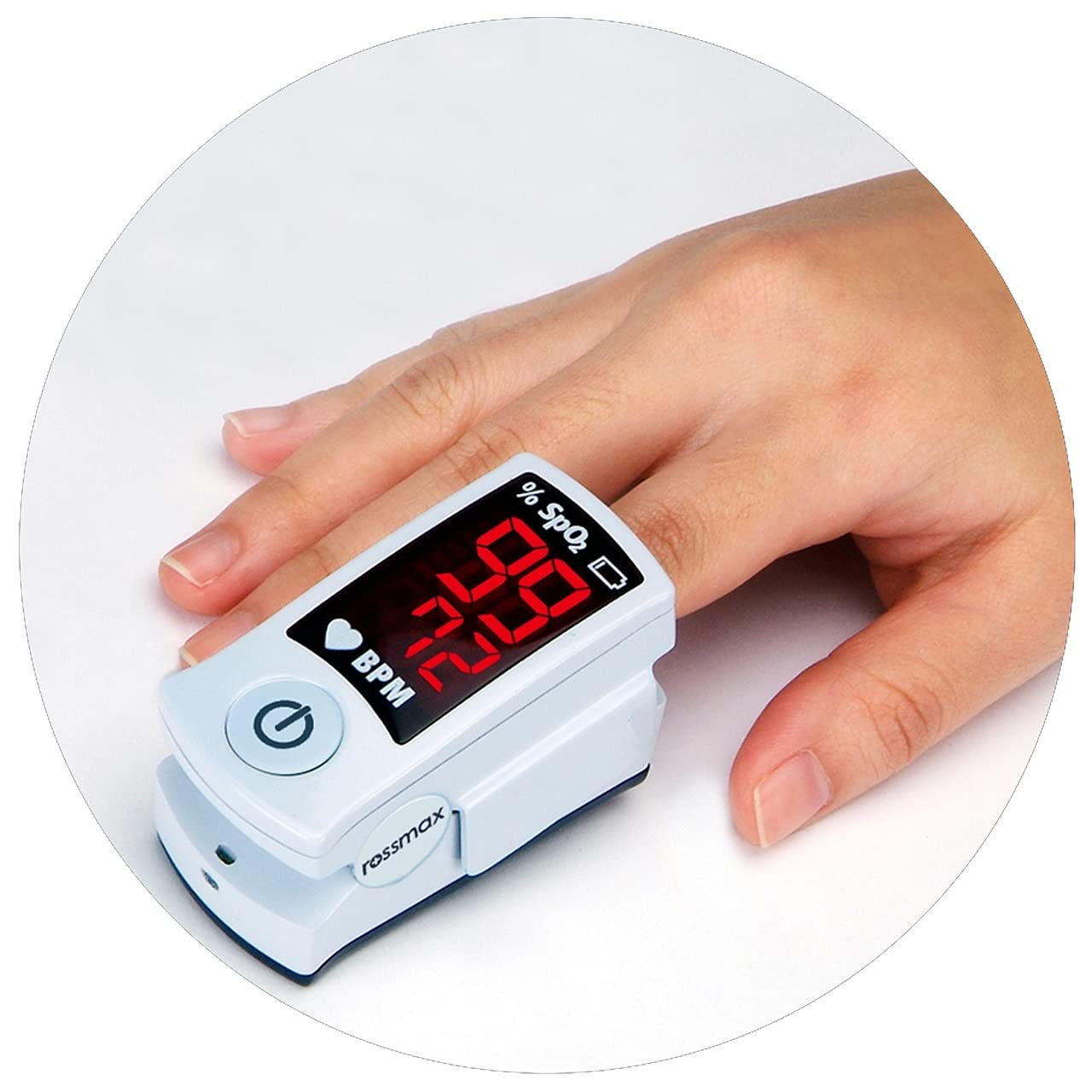You will not be allowed to compare more than 4 products at a time
View compareProduct Description
Shipping Policy
Reviews
Product Description
Description
The Rossmax SB100 is a portable pulse oximeter designed to measure oxygen saturation (SpO2) and pulse rate. Commonly used in hospitals, clinics, and home healthcare, it offers a quick, non-invasive way to monitor oxygen levels. The device features a compact, battery-powered design, ensuring easy portability and convenient use, even in remote locations.
Specifications
Accurate and Reliable : Rossmax SB100 Fingertip Pulse Oximeter provides accurate readings of oxygen saturation (SpO2) and pulse rate
Easy to Use : Simple one-button operation and compact design make it easy to take readings anywhere, anytime
Quick Results : Get fast and accurate readings in just seconds
Comfortable Design : Ergonomic design fits comfortably on your finger for easy use
Portable : Compact size and battery-powered for use at home, in the office, or on-the-go
Clinically Tested : Meets clinical standards for accuracy and reliability
Battery-Operated : Powered by 2 AAA batteries (included)
Includes : Rossmax SB100 Fingertip Pulse Oximeter, 2 AAA batteries, user manual, and carrying case.
Warranty
- Warranty Summary : 2 Years Warranty
- Covered in Warranty : Manufacturing Defects
- Not Covered in Warranty : Breakage/Tampered
- Domestic Warranty : 2 Years
Additional information
- Weight : 30 g
- Dimensions : 12.4 x 4.6 x 8 cm

Shipping Policy
Shipping policies are a critical aspect of the e-commerce landscape, particularly for health monitoring devices. These policies outline the terms and conditions under which products are shipped to consumers, ensuring transparency and reliability in the purchasing process. A well-defined shipping policy can significantly enhance customer satisfaction and trust.
When considering the shipping of health monitoring devices, several key factors must be addressed. First, the shipping methods available to customers should be clearly stated. Common options include standard shipping, expedited shipping, and international shipping. Each method varies in terms of delivery time and cost, which can influence a customer's decision-making process. For instance, standard shipping may take between 3 to 7 business days, while expedited options can reduce this time to 1 to 3 business days.
Another important aspect is the shipping costs associated with each method. It is essential to provide customers with a clear breakdown of shipping fees, which may vary based on the weight and dimensions of the product. For health monitoring devices, which can range from lightweight digital monitors to more substantial equipment, shipping costs can fluctuate significantly. Offering free shipping on orders over a certain amount can also incentivize purchases and improve customer retention.
Additionally, the shipping policy should address the handling of returns and exchanges. In the health monitoring sector, customers may require the ability to return products if they do not meet their expectations or if they encounter issues with functionality. A clear return policy that outlines the timeframe for returns, conditions for eligibility, and the process for initiating a return can help mitigate customer concerns and enhance their overall experience.
It is also crucial to communicate the expected delivery times accurately. Customers purchasing health monitoring devices often rely on timely delivery for immediate health needs. Providing estimated delivery dates based on the chosen shipping method can help manage customer expectations and reduce inquiries related to order status.
Lastly, transparency regarding order tracking is vital. Customers should be able to track their shipments in real-time, which can be facilitated through tracking numbers and links to shipping carriers. This level of transparency not only reassures customers but also reduces the volume of customer service inquiries related to order status.
In summary, a comprehensive shipping policy for health monitoring devices should encompass shipping methods, costs, return procedures, delivery timelines, and tracking information. By addressing these elements, merchants can foster a positive shopping experience, ultimately leading to increased customer satisfaction and loyalty.



 Rs. 1,799.00
Rs. 1,799.00

